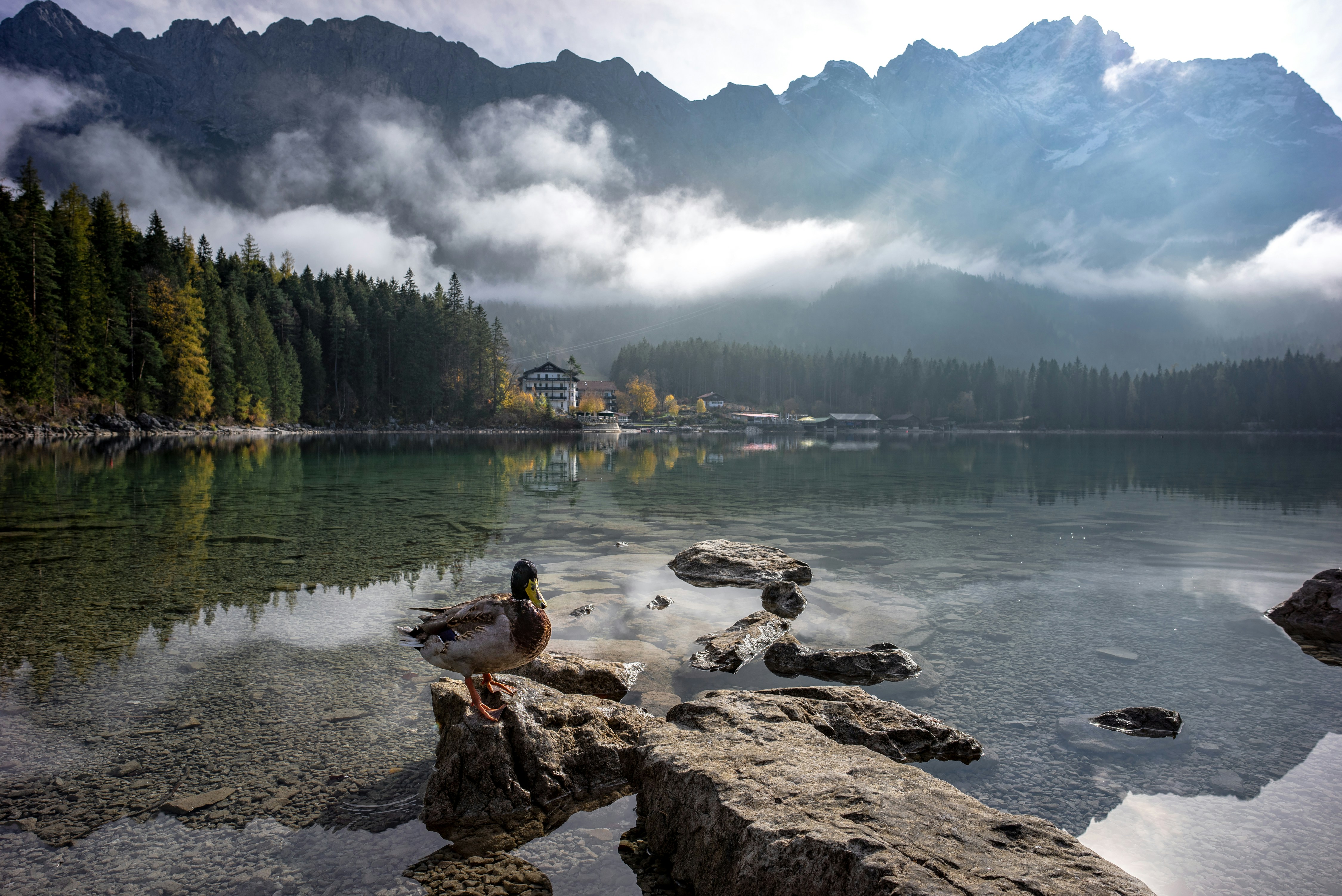Potsdam begins where the city ends — a landscape of lakes and palaces, paths and reflections. It is a place built not to impress, but to balance.
Every view feels composed. The trees are aligned, the air carries the scent of linden and grass, and the sound of water moves through the stillness like breath. This is not wilderness but an idea of harmony, drawn slowly into being over centuries.
A City Built for Light
Potsdam has always existed between imagination and reality. When Frederick the Great made it his residence in the eighteenth century, he saw the land as a blank page. He wanted a place where art, architecture, and nature could form a single expression — a landscape that felt deliberate but never rigid.
The result was a network of gardens and palaces that seem to flow into one another. Sanssouci, the most famous of them, sits on a gentle hill covered in terraces of vines. The palace itself is light and low, its yellow façade curved toward the sun. The name means “without care,” though the perfection of its balance suggests otherwise.
Standing on the terrace, you can look out across the long avenue of trees, the distant pavilions, the mirrored pools. The horizon is clear, the lines exact, but the feeling is soft. Potsdam teaches you that precision can be graceful.
The Shape of the Landscape
The gardens are more than decoration — they are the city’s language. Paths link one space to another: the formal parterres of Sanssouci lead to the wild groves of the New Garden, then on to the English-style lawns of Babelsberg. Each has its own mood, its own rhythm of light and shadow.
The water connects everything. The Havel River winds through the city, breaking into lakes that reflect palaces and forests alike. Bridges cross it at quiet intervals, each one a small act of elegance. On still days, the reflections are perfect — sky, trees, and towers forming an inverted world that moves only when a breeze disturbs it.
Everywhere you walk, the balance between design and nature feels effortless, though it was achieved through centuries of revision.
The Rhythm of Movement
Potsdam invites slow travel. The paths curve gently, and the distances between gardens are just right for walking or cycling. Many German cycling tours include Potsdam in their routes, following the lakeshores and tree-lined avenues that connect the city’s parks.
Cycling here feels like gliding through a painting. The landscape changes gradually: palace façades glimpsed through trees, reflections of clouds shifting on the water, the sound of gravel under tires mixing with birdsong. Each turn of the wheel brings another perspective — another conversation between geometry and light.
It is not about speed or destination, but about the calm repetition of motion. In a place built on symmetry, movement itself becomes part of the design.
The Gardens of Sanssouci
At the heart of it all stands Sanssouci. The gardens spread outward in terraces, planted with vines and framed by low walls. The paths lead to marble statues, fountains, and rows of cypress. In summer, the air smells faintly of fruit and stone warmed by the sun.
At the base of the hill, the Great Fountain mirrors the palace above. Around it, lawns and flowerbeds open into long avenues that disappear into shadow. The sound of water is constant, but never loud. Everything feels measured — each curve, each step, each pause.
Frederick the Great is buried here, near his dogs, under a simple stone slab. Visitors leave potatoes on the grave, a nod to the king’s insistence on their cultivation. It is a small gesture of continuity, a reminder that even visionaries lived among ordinary things.
The New Garden and the Mirror of Water
To the north lies the New Garden, created a generation later in a more natural style. The lines soften here; the trees grow less symmetrically, and the lakes form gentle arcs. The Marble Palace stands by the water, its pale façade mirrored in the surface below.
From its steps, the view stretches across the Heiliger See, calm and unbroken. On some mornings, mist hangs low over the lake, dissolving the boundaries between land and reflection. You can hear the sound of oars in the distance, the quiet rhythm of a rower moving through fog.
The stillness here feels intentional, as if silence itself were part of the design.
Babelsberg and the Edge of the River
Farther east, Babelsberg overlooks the wide bend of the Havel. The park was laid out in the nineteenth century, influenced by English romantic landscapes. It feels freer than the others — steeper slopes, scattered trees, and open views over the river.
The palace stands on a rise, its brick towers catching the light at sunset. Below, lawns descend toward the water, crossed by narrow paths that disappear into woods. The sound of the city fades here; only the wind in the leaves remains.
From the banks, you can see sailboats drifting between islands, their white sails glinting in the low sun. The river moves slowly, almost imperceptibly, as if in deference to the stillness of the land.
Evening in the Gardens
When evening comes, the air cools and the light softens. The statues turn pale against the darkening trees, and the water takes on the color of metal. Lamps glow along the paths, their reflections trembling on the surface of the canals.
The city around the gardens seems to recede, leaving only the sound of footsteps and wind. From certain angles, the palaces look almost weightless, their windows catching the last traces of sky. It is easy to forget that this landscape was built by human hands.
The balance feels too precise, too natural — as if the earth itself had chosen this arrangement.
The Memory of Order
Potsdam’s gardens remind you that beauty can come from restraint. Nothing here overwhelms. The grandeur lies in proportion — in the way a line of trees frames a path, or how water reflects a façade exactly once before moving on.
These gardens were made for thought as much as pleasure. They are spaces for walking, for breathing, for seeing how light touches stone and then fades. The same paths that once carried kings now belong to anyone willing to move slowly enough to notice.
Standing at the edge of Sanssouci’s terraces, the city spread below, you feel the stillness that runs through it all. The water flows, the air shifts, the leaves tremble — and yet everything remains perfectly in place.








Click here to change your cookie preferences